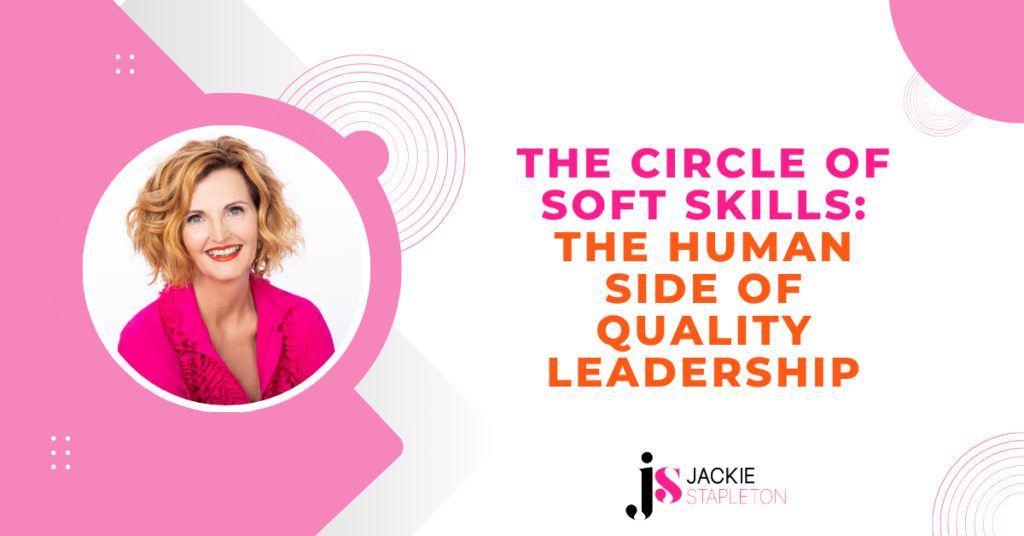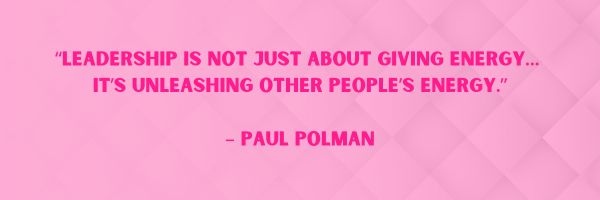November 18th, 2025

—
Congratulations! You’ve mastered the Circle of Knowledge, (and must be feeling pretty clever) and the Circle of Application, (which means you’re very practical too). Now, in Part 3 we arrive at the third – and perhaps the most underestimated – piece of the Quality Leadership Model: Soft Skills.
Soft skills? Even the name tends to leave leaders lukewarm. And what even are they? As leaders we want specificity, systems, rules. But soft skills aren’t any one thing. They aren’t specific to a discipline or industry (not even to quality). Instead, they’re a set of attributes, behaviours and competencies that are personal to you. And, in the workplace, they’re the things that help you to interact effectively (and impactfully) with others.
Again, as leaders, we might find ourselves asking, ‘But where is the ROI? Where are the KPIs? Where are the clauses, the requirements or the processes? If we can’t measure them, are they even real?’
Soft skills might not be as easily measurable (though I’d argue that the outcomes certainly are!) but that doesn’t mean they aren’t vitally important. Because while knowledge tells you what to do, and application shows you how to do it – soft skills determine whether anyone wants to do it with you.
This is the difference between conformance and commitment; between enforcing a system and inspiring people to own it; between pushing change… and leading it.
—

—
What is the Circle of Soft Skills?

The Circle of Soft Skills is about moving from conformance to connection. This isn’t about knowing the clauses or ticking the boxes. It’s about the human side of leadership. Because quality doesn’t live on a page. It lives in the people.
In the Quality Leadership Model, the Circle of Soft Skills is made up of the three deeply interconnected leadership Essentials:
- Communication – how you connect. This is the ability to make quality clear, engaging and relevant. It’s about translating technical language into practical outcomes and ensuring your message lands.
- Awareness – how you sense. This is your ability to read the room, understand emotional dynamics and act with empathy and timing – not just based on what the standard says, but also on what the situation calls for.
- Collaboration – how you bring others with you. This is where quality leadership shifts from solo effort to shared ownership. Where you empower your team to co-create, contribute and commit to improvement.
Together these three Essentials create trust, build resilience and help your quality system become a living part of the organisation – not a rigid rulebook.
Soft skills are the real differentiator
So what’s the real impact of soft skills in your quality leadership? It’s not just about being nicer, or more personable. It’s about creating traction where there used to be tension. Because leading quality is about influence. It’s about guiding teams through change, building a culture of improvement and helping people want to follow the standard – not just feel like they have to.
Strong soft skills help you:
- Explain quality in a way that makes sense
- Get people on board instead of pushing them away
- Navigate resistance without creating conflict
- Connect the dots between the standard and everyday work
But without them? You’re stuck enforcing conformance instead of inspiring commitment.
Real quality success doesn’t come from perfectly formatted procedures. It comes from conversations. From collaboration. And from helping people understand why the system matters – not just what it says.
When you engage people early, explain things clearly and make quality feel like something for them – not to them – you start to build something sustainable.
If you skip the soft skills – if you skip the people – you’ll hit resistance. Disengagement. A system that only comes out at audit time and is quietly ignored the rest of the year.
Without vs With Soft Skills

How to build quality leadership soft skills
In The Culture Code, Daniel Coyle identifies three core skills of highly successful teams – build safety, share vulnerability and establish purpose. These aren’t technical processes. They’re human behaviors. And they’re the soft skills that transform quality from a conformance task into a cultural driver.
Simon Sinek makes a similar point in Leaders Eat Last. He argues that the most successful organisations don’t thrive because of systems alone, but because of the trust and commitment built between people. His research shows that when leaders prioritise people over process, performance improves – and so does culture. This is a lesson that many professionals overlook. You can have flawless procedures, but if your team doesn’t feel safe, engaged or valued, the system won’t stick.
Because quality isn’t just a set of documents – it’s a human experience. And the stronger your relationships, the stronger your system.
If you want quality to stick – if you want your system to live and breathe in the culture – you need more than checklists. You need connection. You need culture. When leaders communicate openly, create trust, and invite contribution, teams stop seeing quality as a checklist – and start seeing it as something worth owning.
Soft skills turn technical knowledge into transformational leadership. This is how you stop instructing and start inspiring. This is how you lead the standard.
But what are the soft skills that are the most important to develop as a quality leader? And how do you develop them? What do you really need to do?
Essential soft skills for quality leaders (and how to leverage them!)
1. Listening
Stop jumping to the solution. Seek to understand the problem first. That’s where leadership begins.
Leverage this by practicing mindful presence in every conversation. Don’t just wait for your turn to talk. Really tune into what the other person is saying – and listen to learn. When people feel truly heard, they’re far more likely to engage in the system and support the change.
2. Communication
Make quality clear, relevant and relatable. Speak the language of your audience – not just the jargon of the standard.
Leverage this by communicating the why. Don’t just explain what needs to be done – show why it matters. Help people see how quality makes their job easier, better and more meaningful.
3. Influence & persuasion
You can’t force improvement. You have to sell the value and help people see what’s in it for them.
Leverage this by leading by example. Model the mindset you want to see. If you want engagement, show up engaged. If you want ownership, show accountability.
4. Emotional intelligence
People resist change. That’s normal. Great leaders recognise resistance without pushing back – they work with it.
Leverage this by engaging in active listening. Create space for feedback. Ask what’s working. And what’s not. Let people know their voice shapes the system – not the other way around.
5. Problem solving
Don’t just point out nonconformances. Help teams find real, sustainable solutions.
Leverage this by becoming a thinking partner, not just a fault finder. Use problems as opportunities to collaborate, learn and improve together.
6. Collaboration
Work across teams. Break down silos. Quality should be integrated into business – not bolted on as a separate system.
Leverage this by empowering, not just enforcing. Give your teams a say. Involve them in shaping processes. Trust their insight. When people build the system, they’re far more likely to follow it.
7. Celebrate
Recognition fuels motivation. Celebrate not just outcomes, but also the effort it took to get there.
Leverage this by recognising and celebrating small wins. Don’t wait for full implementation to celebrate. Acknowledge progress, effort and participation along the way.
You’ve just read a small part of the book! The full version is coming soon—pre-order now and be among the first to read it when it’s released.
View comments
+ Leave a comment